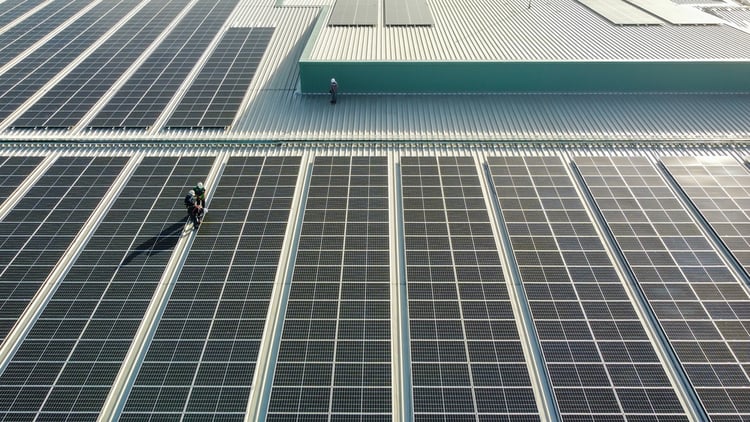EV Chargers: The Ideal Complement for a Commercial Solar Array

Commercial building owners now have access to many green technologies, which make sense financially while reducing their carbon footprint. Solar power has experienced rapid growth in recent years, and it now represents 50% of the new generation capacity being added in the US. When photovoltaic technology is combined with EV charging stations, solar energy can also be used for clean and cost-effective transportation.
Make your commercial building greener with a solar array and EV charging stations.
US inflation has reached a 40-year high at 8.6%, and energy products have suffered some of the largest price hikes. Between May 2021 and May 2022, electricity prices were up by 12.0%, while gasoline prices increased by a drastic 48.7%. However, expensive electricity improves the business case for going solar, while expensive gasoline improves the business case for electric vehicles charged with renewable sources.
Commercial Solar Array: Typical Cost and Savings

The Solar Energy Industries Association (SEIA) is an excellent source of information about photovoltaic technology, and their publications include the quarterly Solar Market Insight report. According to the latest edition from June 2022, commercial solar arrays have an average cost of $1.64/watt, which means you can expect to invest around $820,000 for a 500-kW system. However, the net cost for many building owners is much lower, or even zero in some cases:
- Investment Tax Credit: You can deduct 26% of your solar energy investment as a federal tax credit on your next declaration. Just keep in mind that the benefit drops to 22% in 2023 and 10% in 2024.
- Local incentive programs: Depending on where you live, there may be additional incentives for solar power. These can include grants, rebates, and local tax credits or exemptions.
- Zero-interest or low-interest financing: Solar energy systems can often qualify for excellent financing conditions, which means you can easily pay off the loan with the savings achieved over time.
Assuming favorable site conditions, a 500-kW commercial solar system can generate around 750,000 kWh per year. In a location with an electricity tariff of 16 cents/kWh, this yields $120,000 in annual savings. Considering an upfront cost of $820,000 and a tax deduction of $213,200, the simple payback period is only five years. This is excellent when you consider that quality solar panels have a typical service life of 25 years or more, covered by a warranty.
Expensive Gasoline: Incentive for a Larger Solar Array with EV Chargers

The optimal size for a commercial solar array depends on building consumption. Many electric companies give you credit for surplus generation sent to the grid (net metering), but this is normally limited by your consumption. When onsite solar generation exceeds consumption, most power companies will no longer give credit. They may offer the option of rolling over credits to the next month until you need them, but power companies who will actually pay the balance in cash are extremely rare.
Adding more solar panels to an array makes no sense financially when your consumption is fully covered and your electric company doesn’t give additional credit. However, a solar array expansion makes sense when you can use the additional electricity, and EV charging stations are a viable option for commercial building owners.
Level 1 and Level 2 EV chargers need several hours to fully charge a vehicle, but DC fast chargers can fill a battery to 80% capacity in around 15-20 minutes. When a commercial building is equipped with EV charging stations, surplus electricity from solar panels can be sold to electric vehicle owners. They can recharge their EV while running an errand or attending a meeting, instead of having to wait for a slow recharge at home.
Qualifying for EV Charging Station Incentives
The Biden Administration recently announced the EV Charging Action Plan, which will provide $7.5 billion in funding to deploy 500,000 EV chargers in the US. Depending on how these funds are managed in each state, commercial building owners may be able to qualify for funding. In cases where EV charging stations are deployed along with a solar array, owners may even get financial incentives for both systems.
NY Engineers can analyze the energy needs of your building, and design a commercial solar array of optimal capacity. We can also analyze the potential EV charging demand, and design a charging station layout with the corresponding electrical installations.

Michael Tobias
Michael Tobias, the Founding Principal of NY Engineers, currently leads a team of 150+ MEP/FP engineers and has led over 4,000 projects in the US
Join 15,000+ Fellow Architects and Contractors
Get expert engineering tips straight to your inbox. Subscribe to the NY Engineers Blog below.

